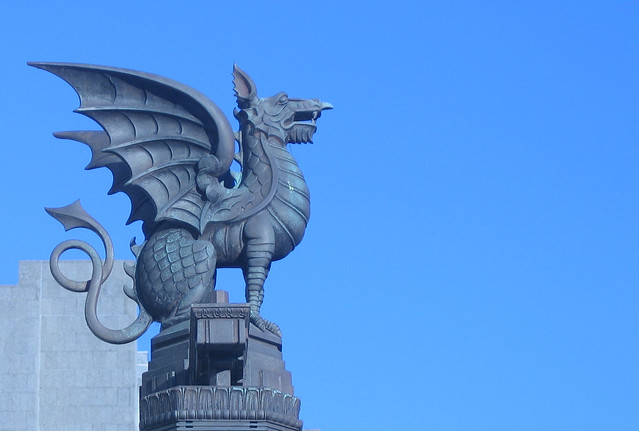THE DRAGON & THE WHALE
[Dollar Macro Liquidity +2.7%; Moody's Baa spread 340 bps; bearish]
AM | @GlobalLiquidity
The London whale was wrong-footed by the dragon. That's my take on the highs that we saw in late March on the S&P500. Let me explain. Sometime in the second half of 2011, JPMorgan's CIO unit, based in London, decided to 'hedge' its cash bond portfolio by buying about $100bn in CDX.NA.IG contracts. Then the Dragon, a.k.a Mario Draghi, decided to strike. His two massive LTRO operations took the Whale (and many others) by surprise.
In the CDX market, forced selling began in earnest. On March 21, 2012, the contract settled at 87. And here's when things got interesting. Although the rate of growth of my Dollar Macro Liquidity Index was already in free fall (+6.35% yoy, vs. +16.0% in July), the CDS market seemed to depict a wonderful world of declining credit risk. And although the Moody's Baa spread was flirting with 300 bps, it was still markedly up on a year-on-year basis. Something was wrong. Now we know the truth: the Dragon had wrong-footed the London whale.
Taking their cues from the CDS market, many participants decided it was time to buy ... equities. By blindly following the lead of the CDX.NA.IG index, they walked into a trap. The index was down not because credit risk was evaporating, but because JPMorgan was being forced to sell. Other liquidity indicators, such as the Dollar Macro Liquidity Index or the Moody's Baa spread, did not appear to justify such a bullish stance. I remained bearish (and wrong) on risk assets for quite a while. In the event, I lost some of my 'Hayekian' faith in the so-called wisdom of market-based indicators.
[1] Fed credit: $ 2,841.7 bn (+4.4%); [2] Custody holdings: 2,784.6 bn (+3.2%); [3] Agency Holdings: $ 715,0 (-5.0%); [4] Dollar Macro Liquidity: $ 6,341.3 bn (+2,7%); [5] Market Liquidity Index: -31.7%; [6] Spread Moody's Baa: 340 bps (+70bps).
______________

No comments:
Post a Comment